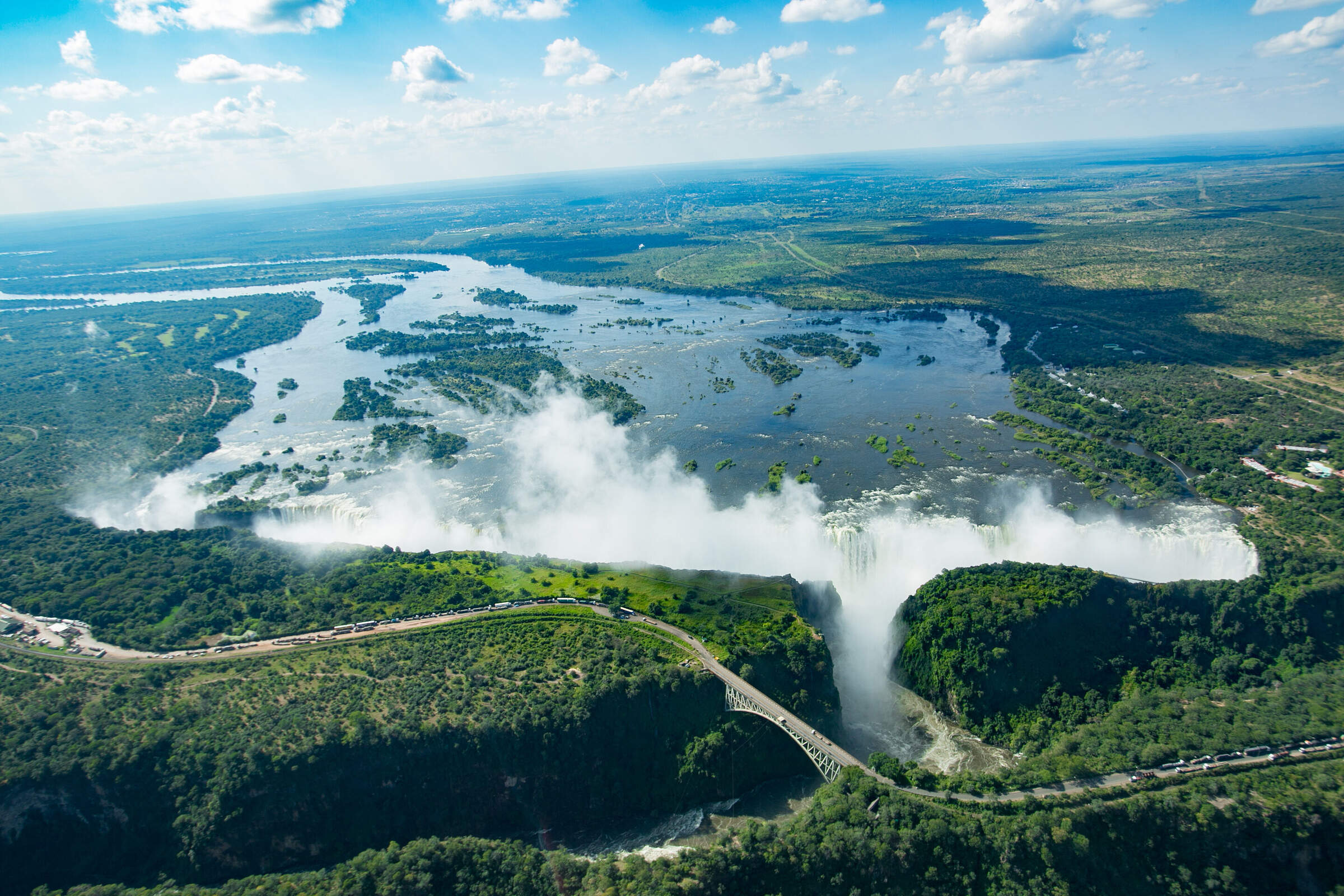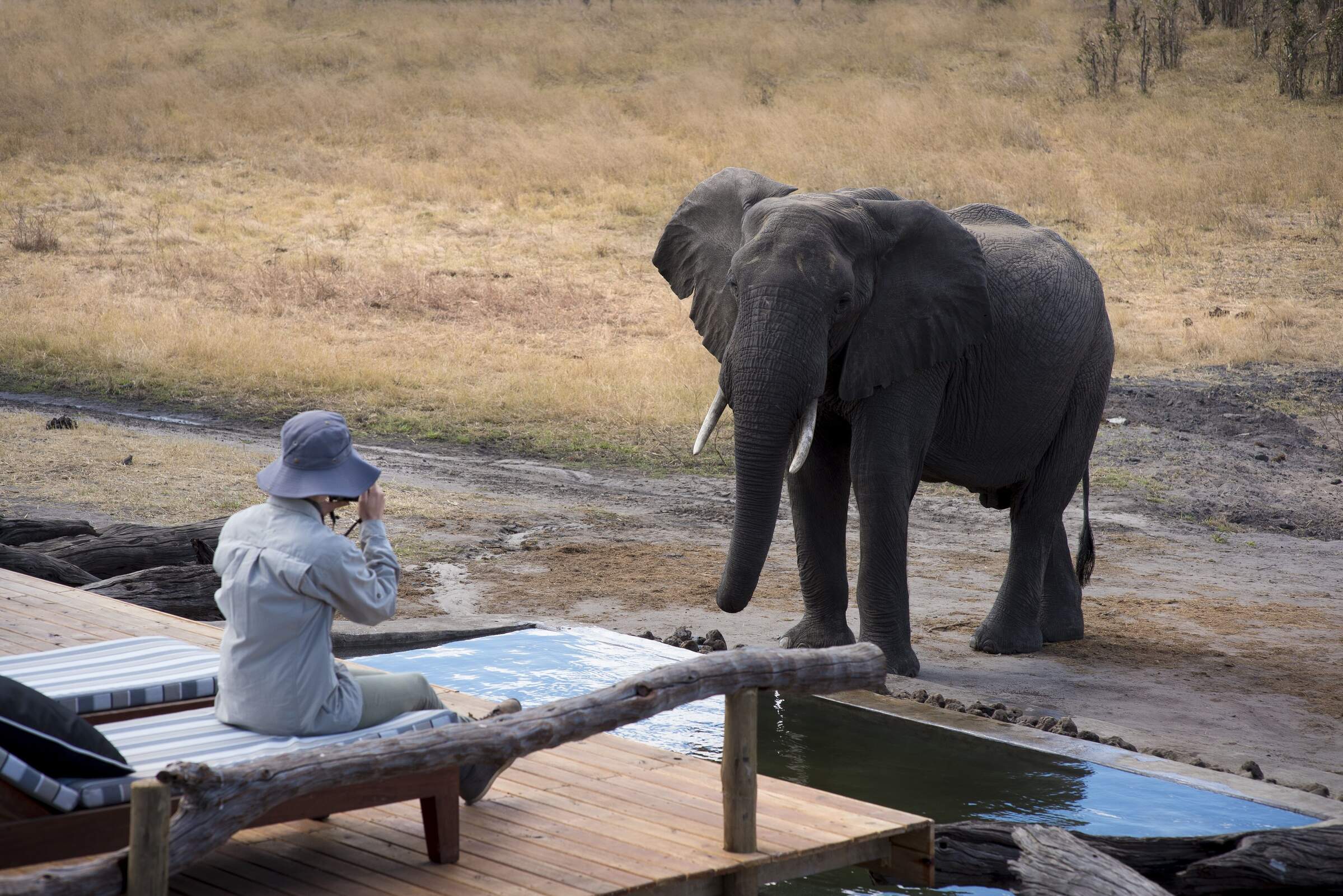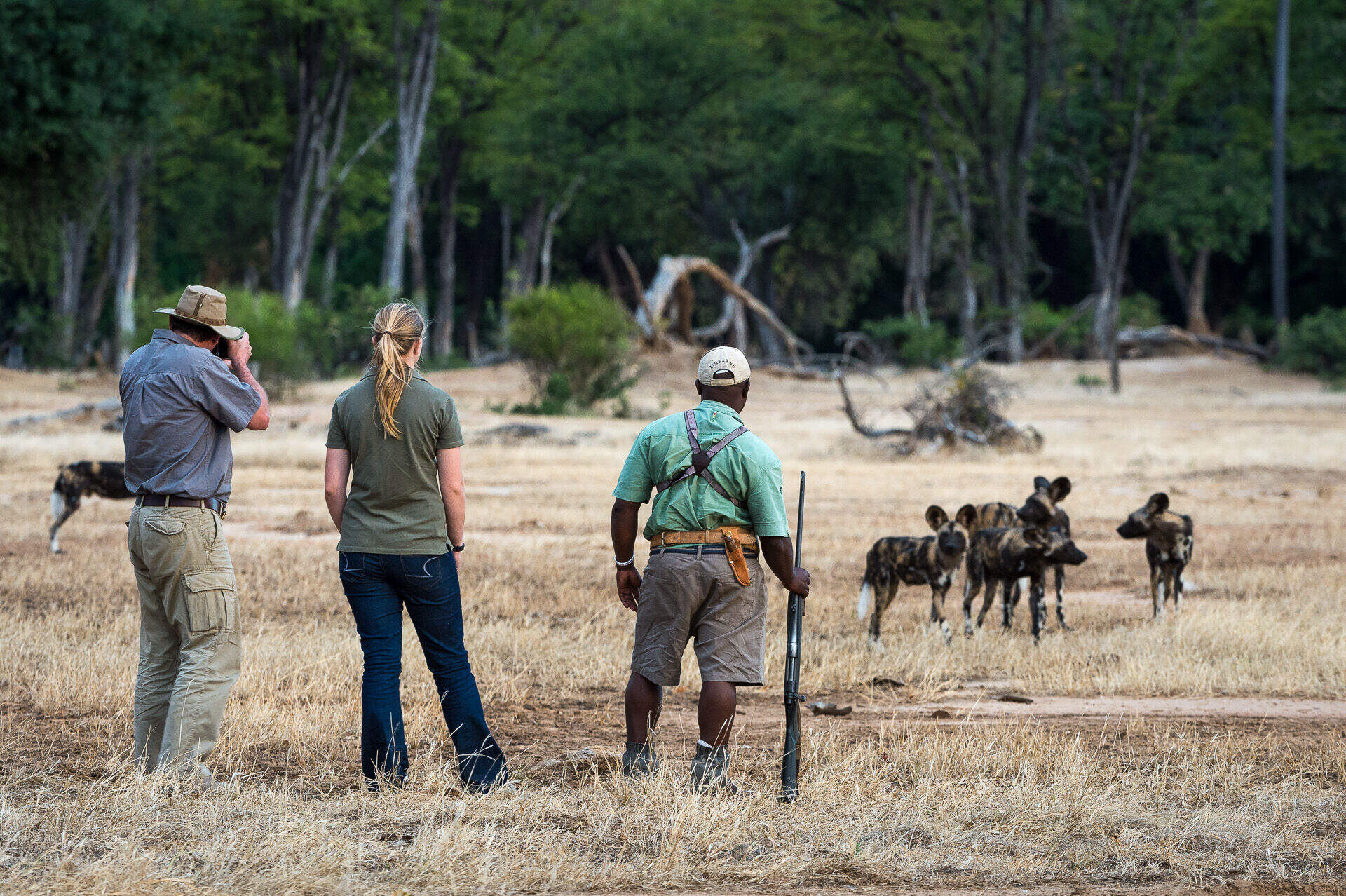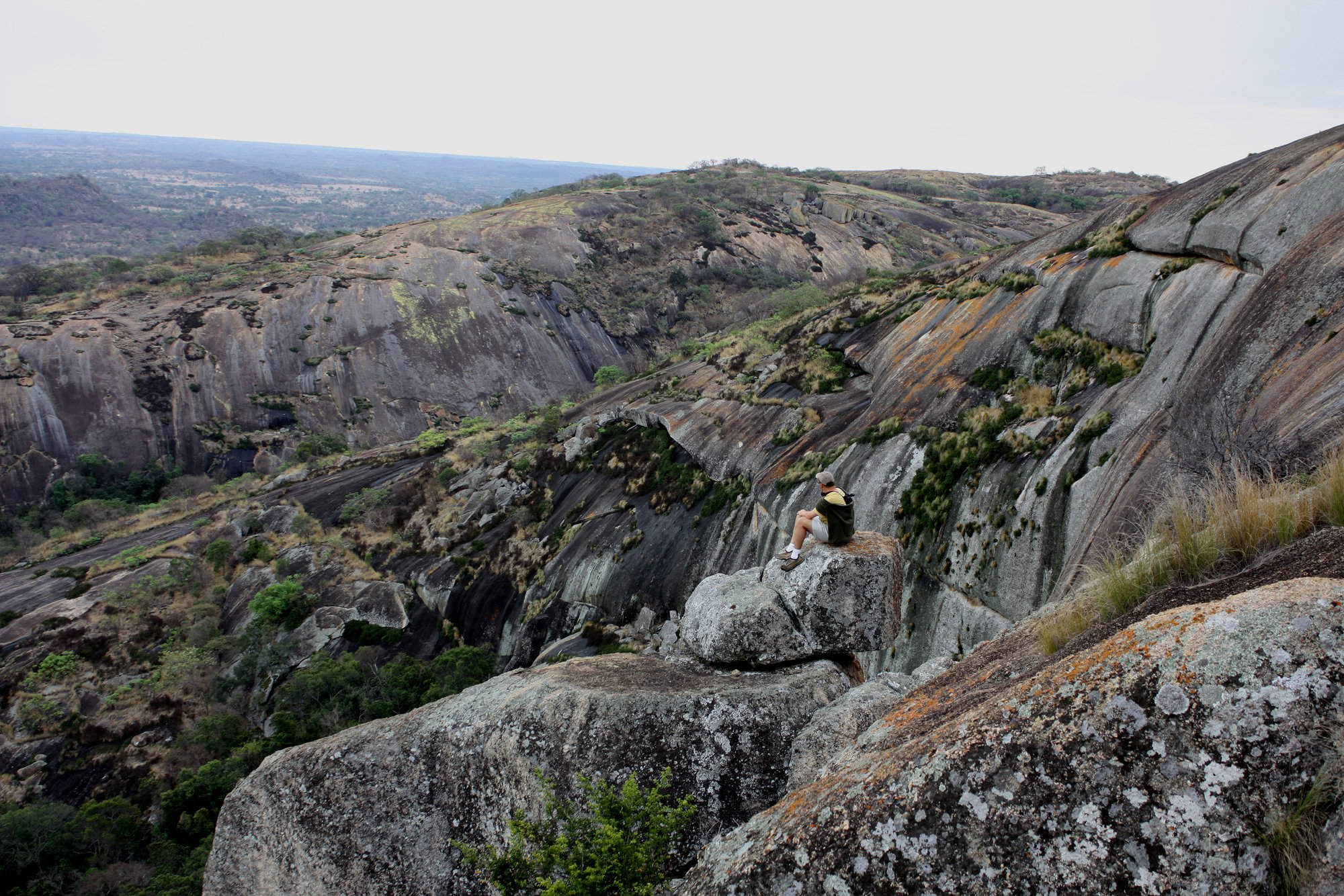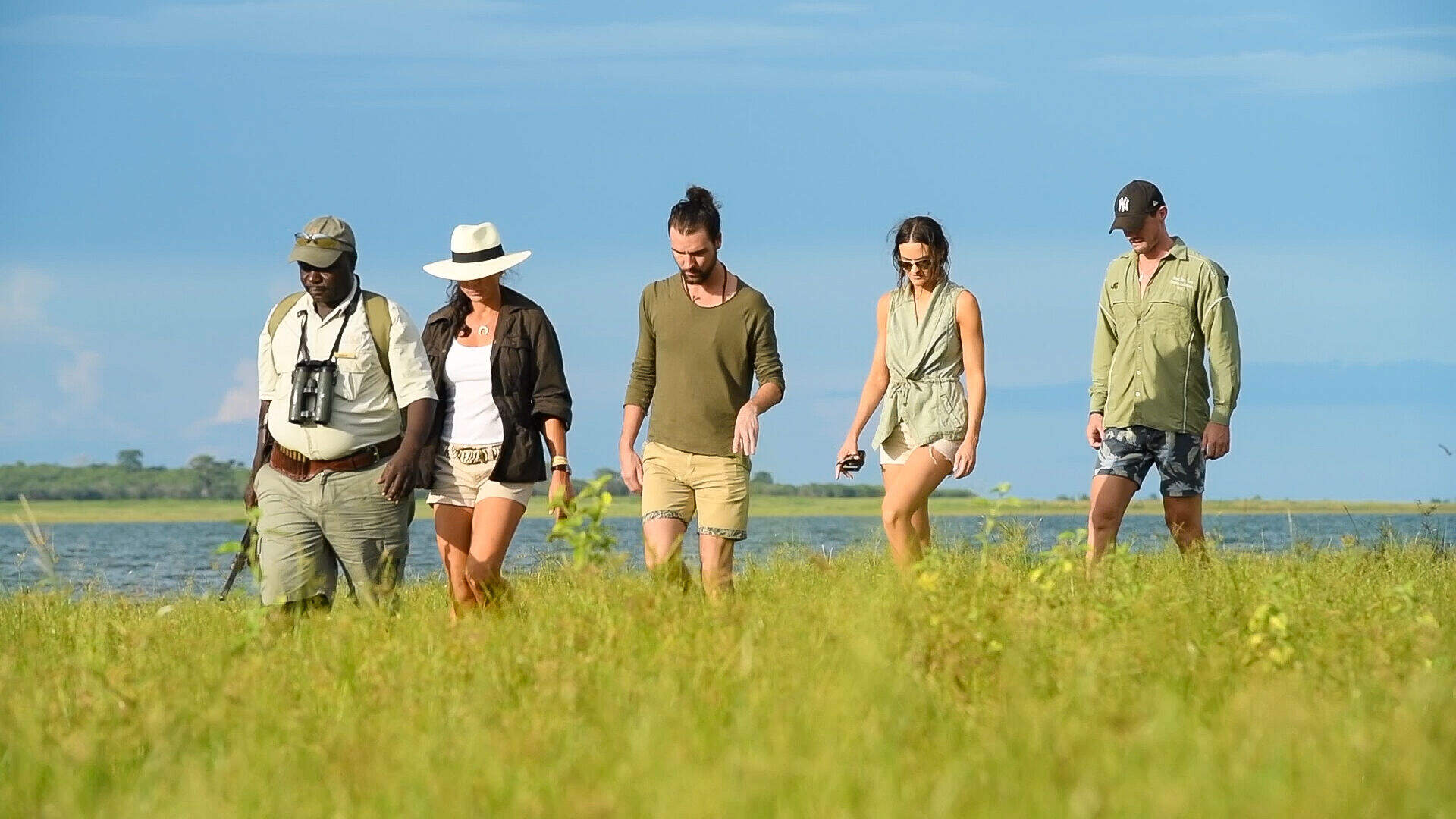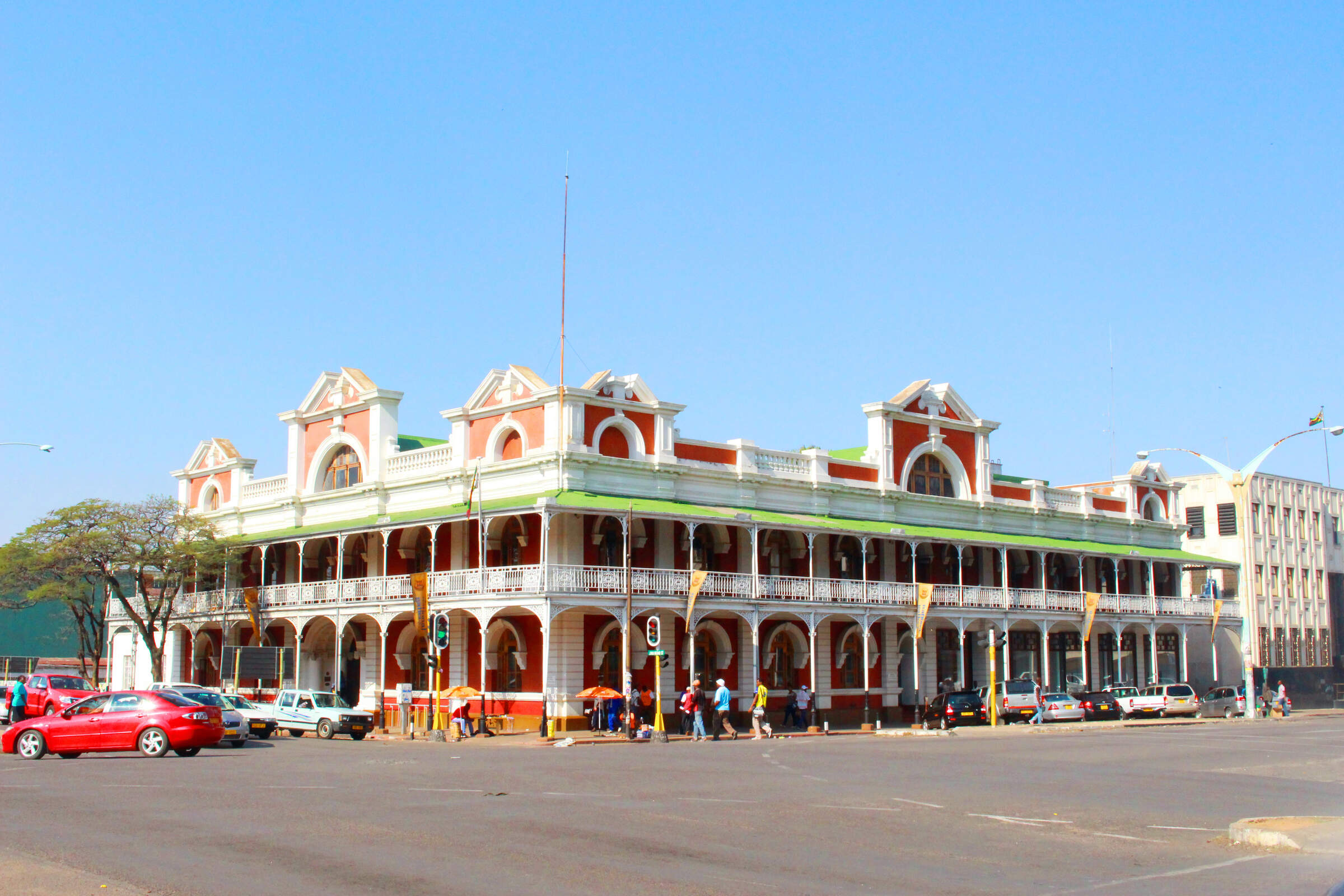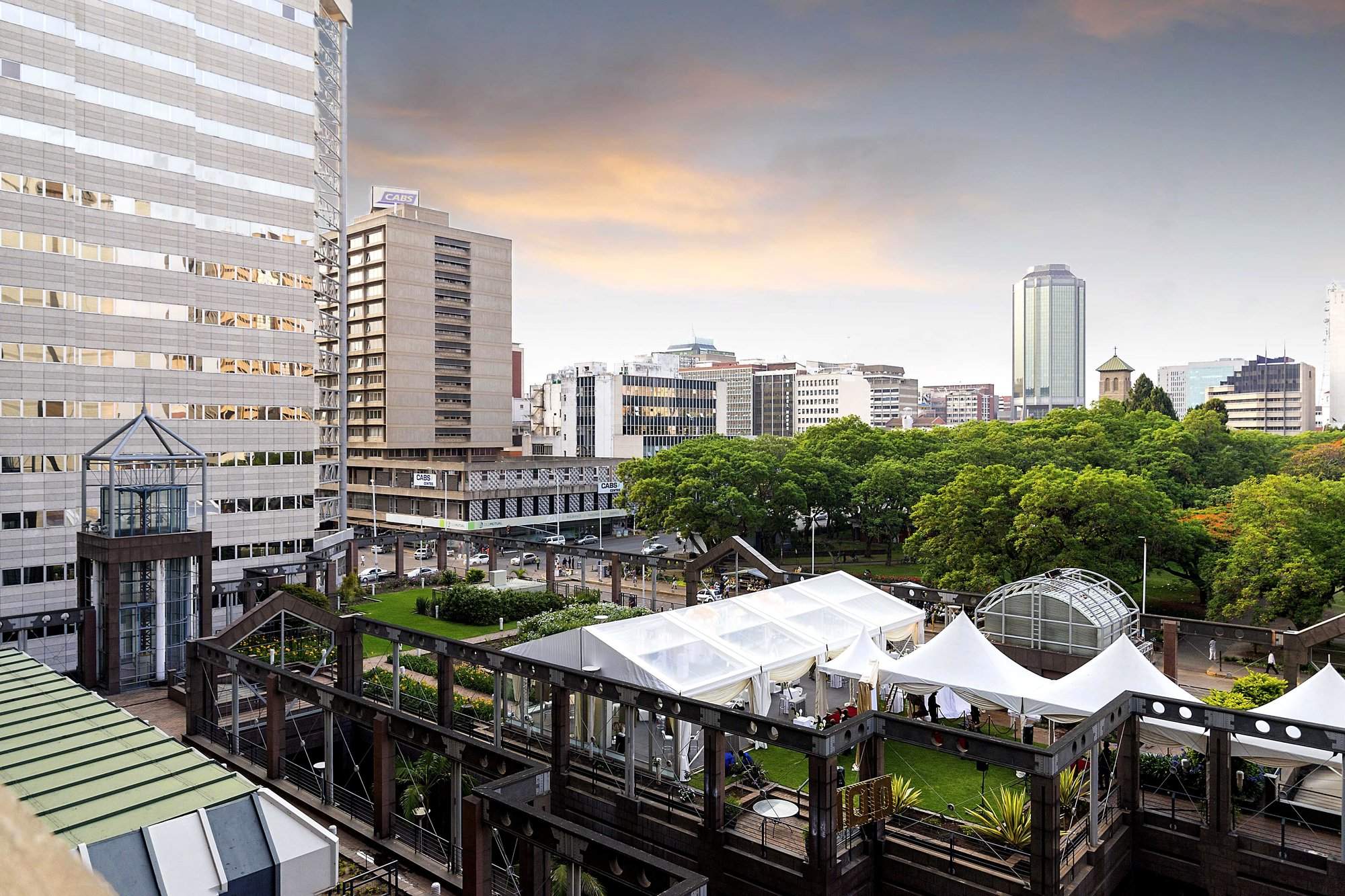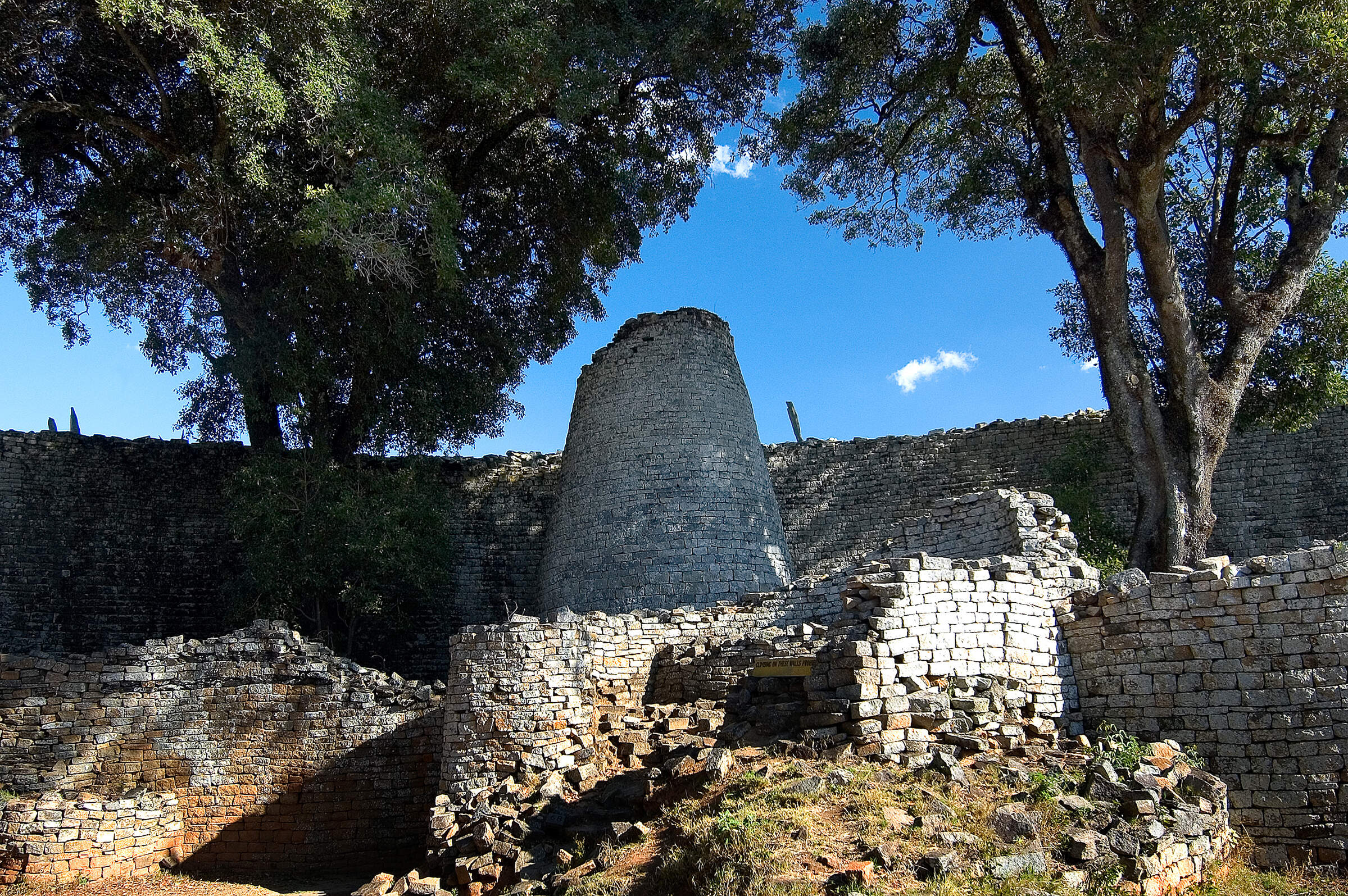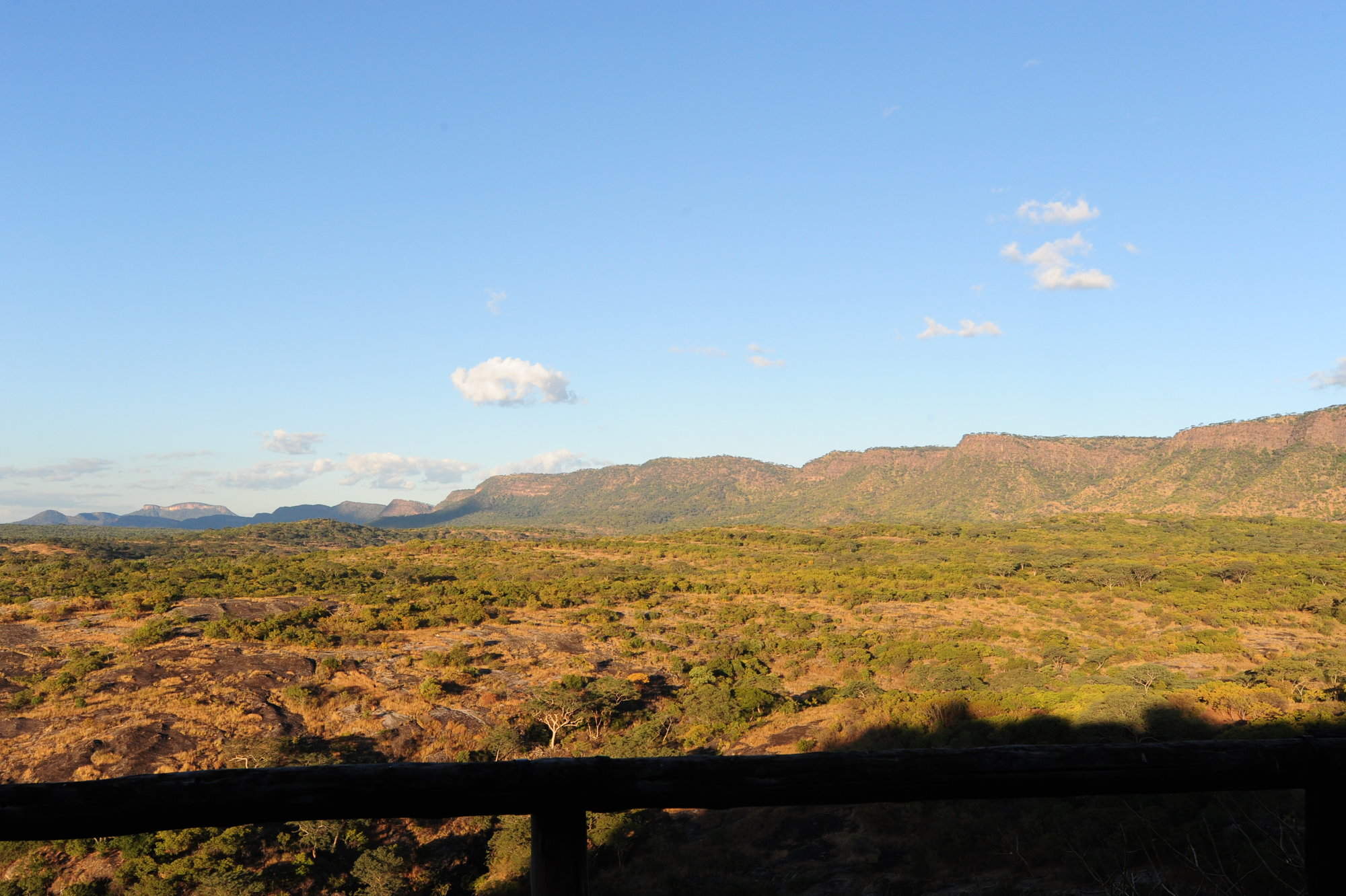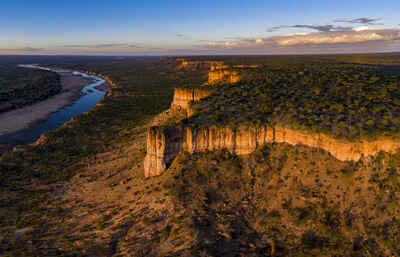
The red sandstone Chilojo Cliffs
The boabab tree, it's been around for a long time
Magnificent bull elephants call it home
A typical Gonarezhou landscape
A walking safari is vastly enhanced by the guide
Soft sandstone cliffs line the Runde River
Chilo Gorge camp overlooks the Runde River
In Shona, The place of elephants
A rhino reintroduction success story
Gonarezhou & Save Valley
Gonarezhou & Save Valley
Perfect for those wanting to escape the crowds and experience Zimbabwe at its rawest.
In southeast corner of Zimbabwe the Masvingo region (also called the South-East Lowveld or even the Save-Limpopo Lowveld) hides some of Zimbabwe’s lesser known wilderness destinations. Bordering Mozambique and a sliver of South Africa, this is one of Zimbabwe’s larger provinces with wildlife areas that are less developed and subsequently quieter than the more well-known parks in the north and west.
While this is a large area, we have concentrated on only two destinations with quality camps and lodges run by owners and companies we have long known. We have also separated out the historic Great Zimbabwe into its own area as this is a very different proposition.
Adjoining Mozambique and South Africa, in the far southeast of Zimbabwe lies Gonarezhou National Park and its 5,000km² of remote undeveloped wilderness varying from open pans of tall grass to dense woodlands and winding river gorges.
Gonarezhou is one of the least visited of Zimbabwe's national parks. It borders the north of South Africa's Kruger National Park and Mozambique's vast Limpopo National Park. Combined these three huge parks make up a truly enormous wild area known as the The Great Limpopo Transfrontier Park. In total, this covers around 35,000km², an area similar in size to the Netherlands!

Safaris visiting Gonarezhou & Savé
Just ideas, we'll always tailor-make a trip for you
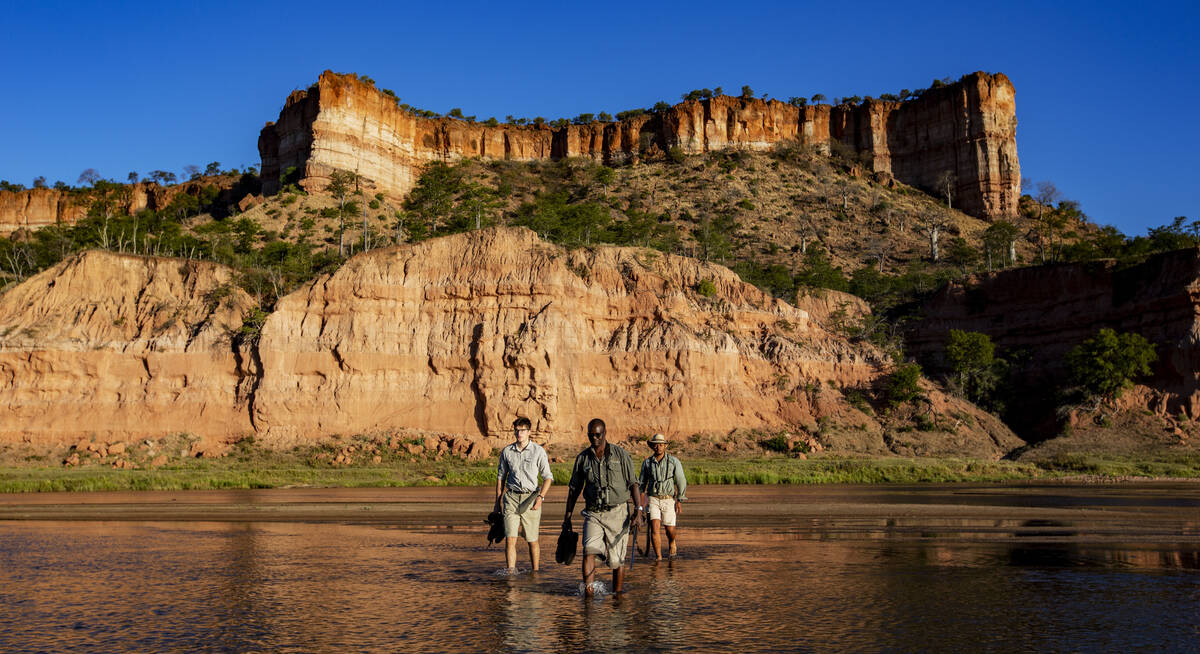
Bat Hawk Safari
7 days • 2 locations
HARARE AIRPORT TO JOHANNESBURG AIRPORT
Explore two areas revered by safari enthusiasts with some of Africa’s best walking and some superb guiding – even by Zimbabwe’s high standards – for a varied and wonderfully immersive wilderness experience.
US$8,670 - US$9,130 per person
Most recent reviews of our safaris to Gonarezhou & Savé
Click below to browse all 7 reviews from Gonarezhou & Save Valley. All from our travellers; all are in full & unedited.
Arrived 27 Apr 2024, 28 nights
"Our seventh trip to Africa"
Overall rating: Excellent
Arrived 26 May 2022, 9 nights
"My May 2022 trip"
Overall rating: Excellent
Arrived 19 Jul 2021, 24 nights
"July/August 2021: Zimbabwe and Tanzania"
Overall rating: Excellent
Arrived 8 Sep 2019, 14 nights
"Stunning Zimbabwe"
Overall rating: Excellent
Arrived 10 Jul 2019, 15 nights
"My Jul 2019 trip"
Overall rating: Excellent
Arrived 8 Nov 2014, 16 nights
"My Nov 2014 trip"
Overall rating: Excellent
Arrived 7 Jun 2014, 14 nights
"My Jun 2014 trip"
Overall rating: Excellent
Where to stay in Gonarezhou & Savé
Our suggestions for safari camps in Gonarezhou & Save Valley
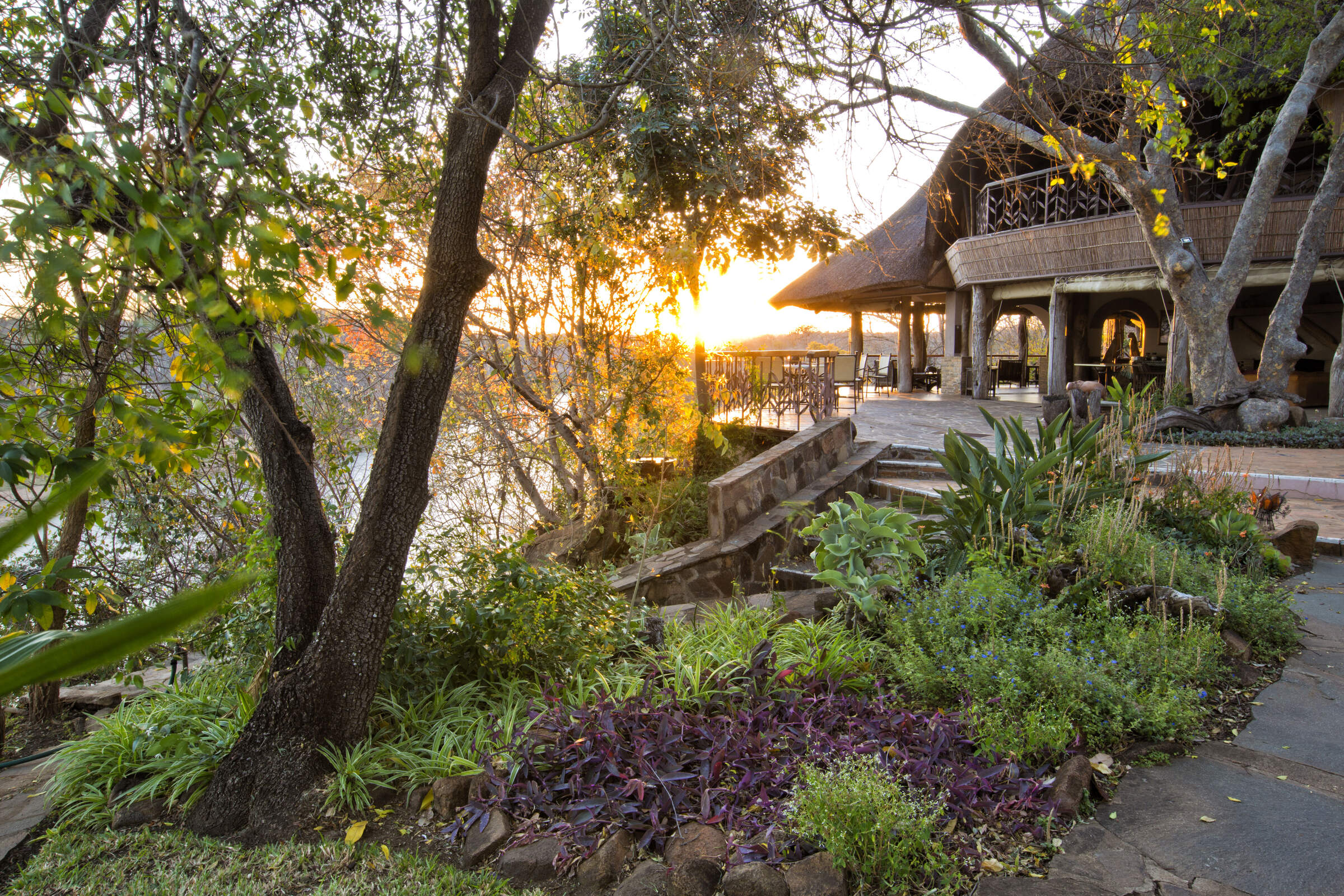
Chilo Gorge Safari Lodge
On the banks of the Save River, Chilo Gorge Safari Lodge offers game drives and walking safaris in Gonarezhou National Park.
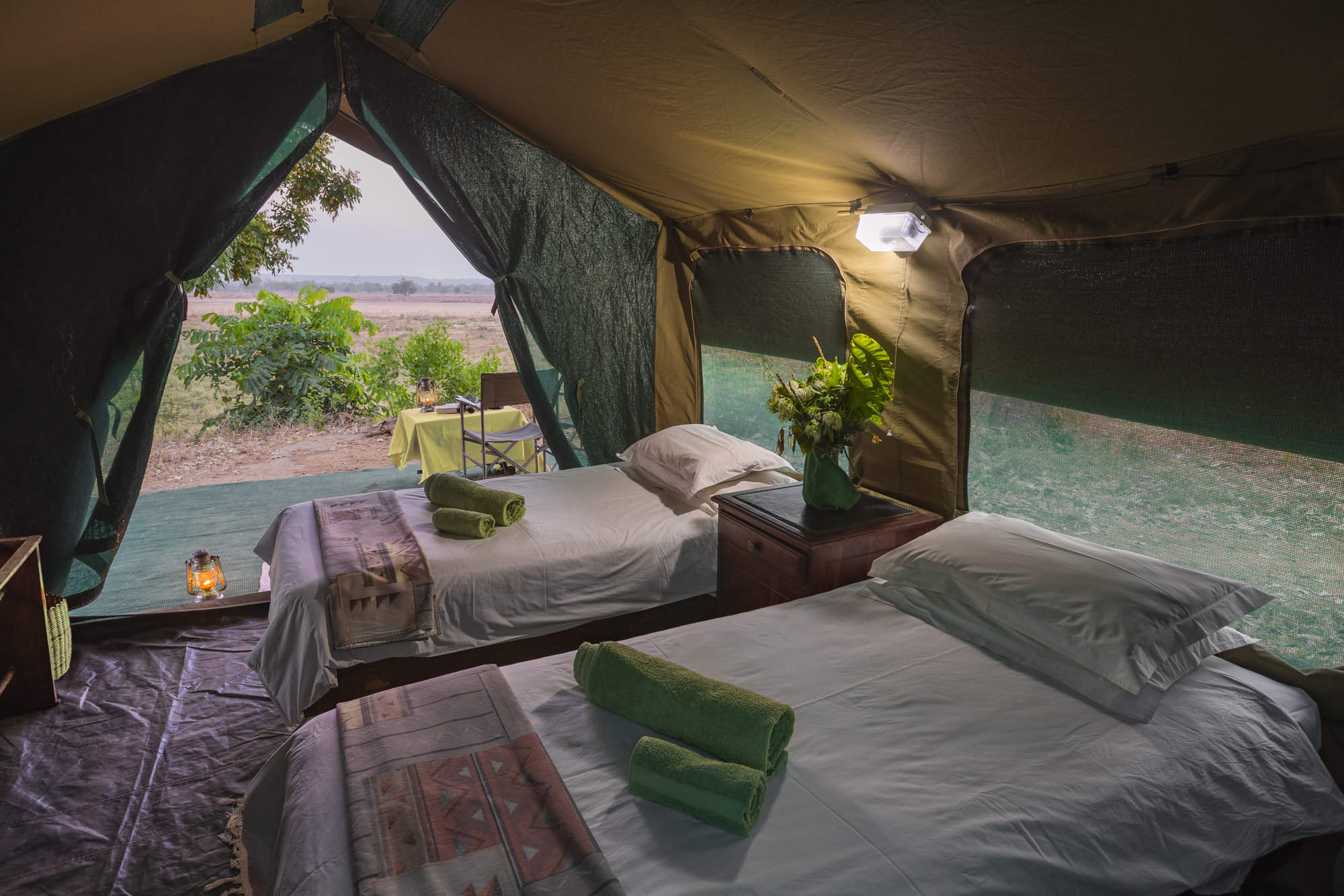
Chilo Gorge Tented Camp
Chilo Gorge Tented Camp is a classic safari style property in Zimbabwe's isolate Gonarezhou National Park.
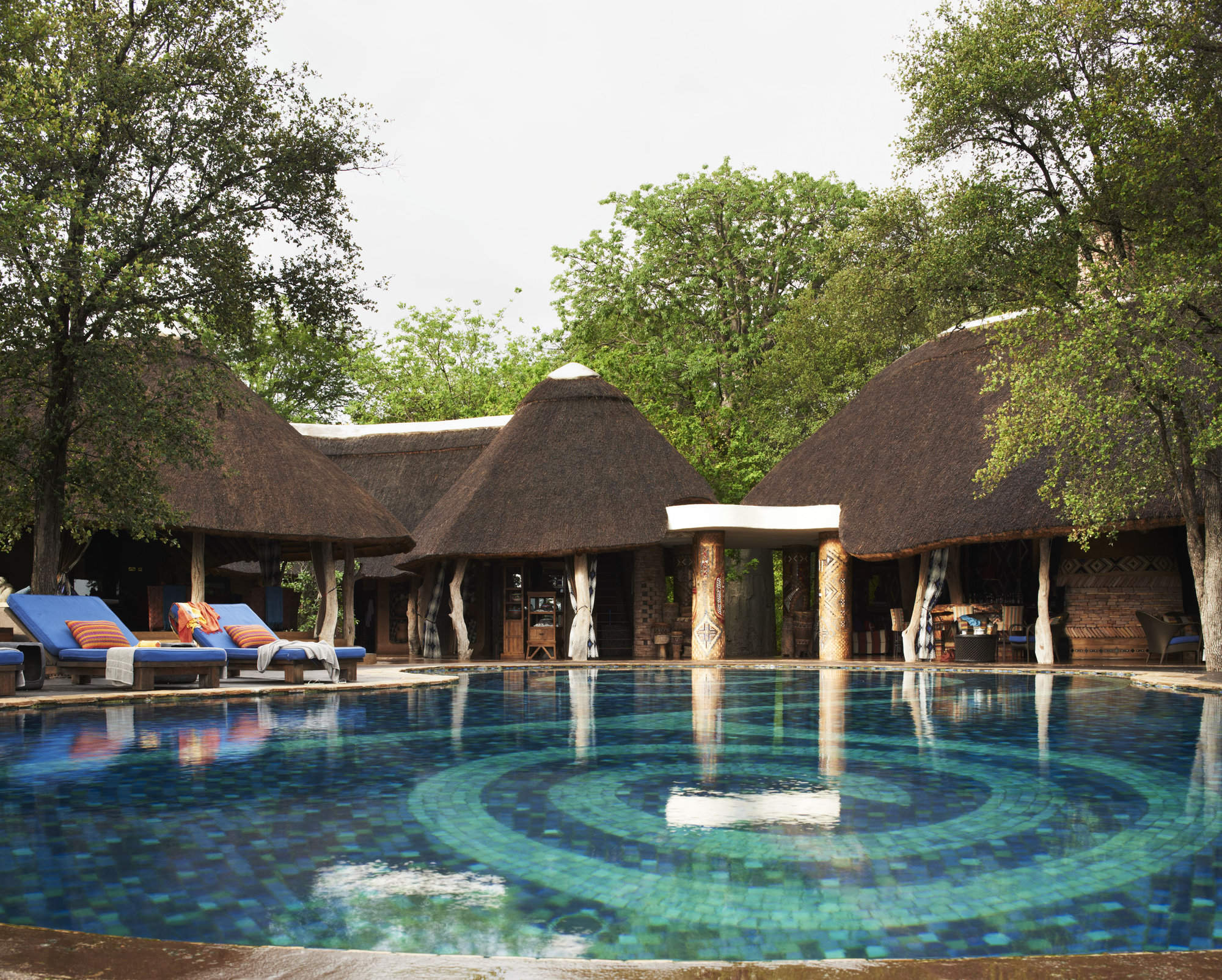
Pamushana Lodge
Pamushana Lodge is one of the most luxrious in Zimbabwe, facilities include a tennis court and spa. The wildife watching is excellent too.
Our travellers’ wildlife sightings in Gonarezhou & Savé
This is their success for sightings in Gonarezhou & Save Valley. Click on a species for more detail. How we work this out.

100% success

100% success

100% success

100% success

100% success

100% success

71% success

57% success

50% success

33% success

33% success

33% success

17% success

0% success

0% success

0% success

0% success

0% success
When to go to Gonarezhou & Save Valley
Our month by month guide: What it's like to visit Gonarezhou & Savé in Zimbabwe
Jan
Feb
Mar
Apr
May
Jun
Jul
Aug
Sep
Oct
Nov
Dec
Zimbabwe in January
January falls in the middle of Zimbabwe’s rainy season and is the wettest month of the year. Heavy rainfall occurs most days, flooding seasonal rivers and waterholes, with the occasional sunny spell.
With the high levels of precipitation the wildlife in the national parks becomes widely dispersed, taking advantage of the abundance of food and water, and is easily hidden by the thick, green bush.
While sightings of larger animals are possible, and many species drop their young at this time, game viewing is often sparse. However, many migratory species of bird arrive in Zimbabwe making it a peak month for birding.
The rains create incredibly sticky mud in Mana Pools National Park, preventing access and causing camps to close for the season. The majority of the camps in other parks remain open, with low rates attracting a smattering of visitors.
- Peak of the rainy season: hot & humid with heavy rain most days
- Bush exceptionally thick and green, with poor game viewing
- Species such as impala drop their young
- All camps in Mana Pools closed
- Very few visitors, and low rates at open camps
Our view
A time to avoid if possible
Weather in January
Zimbabwe in February
February remains well within Zimbabwe’s rainy season. Although total rainfall drops, relatively short thunderstorms can still be expected most afternoons. On the plus side, there is a greater chance of some sunshine in-between.
Much of the country remains waterlogged, closing access to Mana Pools and severely restricting walking safaris in other parks. While game drives and canoeing remain an option, the abundance of water disperses animals, and thick grass can make it difficult to spot larger species, but birding remains excellent. Conversely, this is a great time of year to view the landscape, and is excellent for photographers. Sporadic cloud cover and clear air can make for some spectacular sunsets too, particularly over Lake Kariba and the Zambezi River where the reflections off the water add to the beauty.
- Generally wet with frequent thunderstorms & hot humid days
- Poor wildlife viewing due to dispersed animals & thick bush
- Clear air, green landscapes & exceptional sunsets
- All camps in Mana Pools closed
- Very few visitors & low rates at camps that are open
Our view
This is not a great time to visit
Weather in February
Zimbabwe in March
March is the final month of Zimbabwe’s rainy season, when the rains start to trail off and sunny days become the norm. However, some days the clouds can still build, breaking into thunderstorms in the afternoon.
Mana Pools remains closed throughout the month but the majority of camps in Hwange, Matusadona and Gonarezhou remain open. Here, the landscape is green and alive, with migrant species of birds taking advantage of the abundant insect life. Larger animals remain elusive though, and walking safaris remain restricted.
By this time of year, the rains have normally trickled down to the Zambezi River and the flow of water over the Victoria Falls starts to increase, but without kicking up too much spray to obscure the views.
- Last month of the rainy season: hot, humid days with occasional storms
- Lush vegetation means good birding, but poor game viewing
- Views of the Victoria Falls improve
- All camps in Mana Pools closed
- Open camps have few visitors & low rates
Our view
This is not a great time to visit
Weather in March
Zimbabwe in April
April marks the end of Zimbabwe’s rainy season and the end of summer. Clear skies are the norm, with just the occasional shower. Temperatures start to drop, failing to reach 30ºC most days and dropping down to around 10ºC at night.
As the rain fades the landscape starts to dry out. While the vegetation remains thick and green, the soil in Mana Pools dries enough for camps to open, and the only camps to remain closed are the most remote bushcamps in Hwange. Although viewing of larger animals remains tricky, the improved weather starts to draw back visitors, as do prices significantly below those in the peak season.
The Zambezi River and flow of water over the Victoria Falls is at its highest, although large amounts of spray diminish views of the waterfall itself.
- Transitional period, with much lower rainfall & falling temperatures
- Wildlife is still dispersed & hard to see, but sightings improving
- Views of the Victoria Falls often obscured by spray
- Camps in Mana Pools open
- Visitors start to return & camps increase their rates
Our view
A good time to visit, with pros & cons
Weather in April
Zimbabwe in May
The first month in the dry season, May is also Zimbabwe’s first month of winter. If the rains are particularly late in a given year, you may catch the odd shower, but you can expect clear and sunny days the majority of the time. While it’s warm in the daytime, temperatures drop to single digits at night, so bring a warm jumper and gloves for early morning drives.
With the rain having cleared the air, the sky is bright blue, and it’s the best time of year for photography.
Even the most remote camps in Zimbabwe are now open. With the lack of rainfall, vegetation dies back significantly, and seasonal rivers return to sand. Not only does this open up the possibility of walking safaris, but wildlife viewing becomes much more reliable.
- Start of the dry season, with milder days and cold nights
- Game viewing significantly improves as vegetation dies back
- Vegetation starts to turn from green to brown
- Best time for photography with crystal clear air
- Visitors start to return; all camps open & rates increasing
Our view
A very good time to visit
Weather in May
Zimbabwe in June
During June you can virtually be guaranteed of dry and sunny days, although temperatures continue to drop, and can get close to freezing at night in Hwange National Park. Jumpers, jackets and gloves are strongly recommended for early mornings and evenings.
The opportunities for wildlife viewing improve throughout the month as the landscape rapidly dries, and the animals start to gather on the banks of the Zambezi River and around Hwange’s waterholes.
Water levels in the Zambezi River start to drop, reducing the amount of spray kicked up at the Victoria Falls and greatly improving visibility, but still allowing a full curtain of water to cascade over the edge.
- Middle of winter, with night-time temperatures close to freezing
- Game viewing significantly improves throughout the month
- Views of the Victoria Falls are at their best
- Noticeable increase in visitor numbers
- Camps considerably more expensive
Our view
A very good time to visit
Weather in June
Zimbabwe in July
July sits in the middle of Zimbabwe’s dry season. Although it’s warm at midday, temperatures are generally cold and in Hwange it’s been known to drop below freezing at night, with the lower-altitude Mana Pools feeling a bit warmer.
With wildlife clustering around the few remaining waterholes, sparse vegetation, and some of the best views of the Victoria Falls, this is one of the most popular times to travel, with camps charging peak season rates to reflect this. That said, visitor numbers to the country in general remain low, and outside of the Victoria Falls it’s rare for any areas to feel crowded.
- Middle of the dry season with almost no chance of rain
- Clear sunny days, but very cold nights
- Wildlife viewing good; game drives and walking safaris unrestricted
- Views of the Victoria Falls at their best
- Camps charging peak season rates
Our view
A very good time to visit
Weather in July
Zimbabwe in August
While August is the end of winter and temperatures are starting to creep up, mornings and nights are still cold, and game drives in open vehicles can feel particularly chilly. Well into the dry season, the landscapes will have mostly transformed from green to brown and wildlife viewing in Zimbabwe’s national parks is approaching its best. Due to dust kicked up into the atmosphere and smoke from bush fires you may start to notice a haze on the horizon, but this doesn’t significantly impact photography.
August is one of the most expensive months, and the pleasant weather and decent game viewing attracts lots of visitors. While the national parks rarely feel crowded, Victoria Falls accommodation can sell out a year in advance.
- Warm, sunny days but cold mornings & nights; almost no chance of rain
- Wildlife viewing nearly at its best
- Landscape turns brown, & an atmospheric haze develops
- All camps charging peak season rates
Our view
Fantastic: the very best time to visit
Weather in August
Zimbabwe in September
Temperatures in September rarely drop below 15ºC, but are yet to reach the oppressive highs of summer. It will normally have been five months since the last drop of rain, so antelope and elephants cluster around whatever water remains, with predators never too far away.
The landscape is very brown, and the haze building on the horizon takes some of the colour out of the sky, so while animal subjects are plentiful, the background is not ideal for photography.
The combination of incredible wildlife viewing, hot and sunny weather, and cheaper flights outside of the school holidays make this the most popular time of year to travel, and availability at the camps can become limited up to a year in advance.
- The best month for weather, with a pleasantly warm temperature range
- One of the best months for game viewing
- Victoria Falls starting to dry but still impressive on Zimbabwean side
- All camps are charging peak season rates
- Most popular time to travel, & space can be limited
Our view
Fantastic: the very best time to visit
Weather in September
Zimbabwe in October
October is the last month of the dry season with little chance of rain but building humidity. While the higher elevation of Hwange National Park limits temperatures to the 30s Celsius, they can easily top 40ºC in Mana Pools.
With little vegetation or water, wildlife is drawn to the few remaining water sources and viewing is at its best; visitors who brave the heat can be rewarded with some exceptional sightings, although haze in the air diminishes photos. Maximum visibility and dense wildlife concentrations can also make for very rewarding walking safaris, although the heat can make them uncomfortable.
Water levels in the Zambezi at the Victoria Falls drop significantly, and large stretches of the waterfall are a dry cliff-face – although it never dries completely. Camp rates remain at their peak, but visitor numbers drop as people avoid the heat.
- Last month of the dry season; very hot with building humidity
- Wildlife viewing at its very best
- Dust & smoke in the air diminish photographic opportunities
- Victoria Falls starting to look very dry
- Camp rates remain at their peak
Our view
A very good time to visit
Weather in October
Zimbabwe in November
November is a transitionary period, with high temperatures and humidity. While they can’t be predicted with any precision, the first rains normally arrive halfway through the month, in the form of thunderstorms lasting a few hours each day.
Early November is a popular time to travel as the camps drop their rates, so if you’re lucky you can get peak-season game viewing at low-season rates. This is a gamble though as if the rains do arrive, animals are no longer limited to a few dangerous waterholes and will disperse into the bush. While all the camps in Mana Pools intend to remain open, the rains can make the airstrips unusable so you may find yourself moved to a different park, a risk that increases through the month.
- Typically the start of the rains in Zimbabwe
- Temperatures & humidity levels remain high
- Wildlife viewing rapidly diminishes as the rains arrive
- Camps remain open, but risk early closure in Mana Pools
- Much cheaper time to travel as camps drop their rates
Our view
A good time to visit, with pros & cons
Weather in November
Zimbabwe in December
By December the rainy season has begun in earnest; this is one of the wettest months in Zimbabwe, with heavy thunderstorms most afternoons and occasionally continuous rain for a couple of days. While temperatures start to cool down the high levels of humidity can make the heat feel more oppressive.
With the rains comes an explosion of green growth, and the dust and smoke are washed out of the air. The resulting scenery – with the occasional bright blue skies – can be fantastic for photographers. Thick vegetation and plentiful water makes viewing of larger animals tricky, but with migratory species arriving the birding is at its best.
All camps in Mana Pools and the remote Hwange camps close, with those remaining open charging their lowest rates.
- One of the wettest months in Zimbabwe
- High temperatures & levels of humidity
- Wildlife viewing poor, but birding good
- Lush green landscapes & clear air; great for landscape photography
- All camps in Mana Pools closed
Our view
This is not a great time to visit
Weather in December
Gonarezhou & Savé: In detail
Gonarezhou & Savé
Gonarezhou National Park
Highlights of the Gonarezhou experience include watching herds of elephant – although the elephants here have a reputation for being quite aggressive, and so care should always be taken. As well as its many other antelope species, Gonarezhou National Park is known for good populations of the beautiful, but often secretive, nyala. 4WD game drives and walking safaris are among the activities which are available here.
Savé Valley Conservancy
Since its formation the area has seen the successful re-introduction of 14 different species including black and white rhino as well as what was at the time the largest translocation of elephant ever. The huge area with the variety of habitats it contains has led to the SVC being designated a conservation area of international importance. Despite remaining relatively unknown there are significant populations of both species of rhino, increasing numbers of predators including lion, cheetah and African wild dog. Other threatened species such as southern ground hornbill, lappet-faced vultures and elephants are also thriving.
Due to the diversity of wildlife, numerous charities and NGOs are involved in research and conservation here. These include the Lowveld Rhino Trust, the African Wildlife Conservation Fund (AWCF) – Lowveld Wild Dog Project and Tusk who continue to assist with funding and training for anti-poaching units in the valley.
This makes the SVC a fantastic area for travellers looking to get away from the crowds and while it isn’t a destination for wall to wall game, it is a perfect area for those who want to experience unspoilt nature, often on foot, with a chance to see conservation in action.
Map of Gonarezhou & Save Valley
Choices for where to stay in Gonarezhou & Save Valley
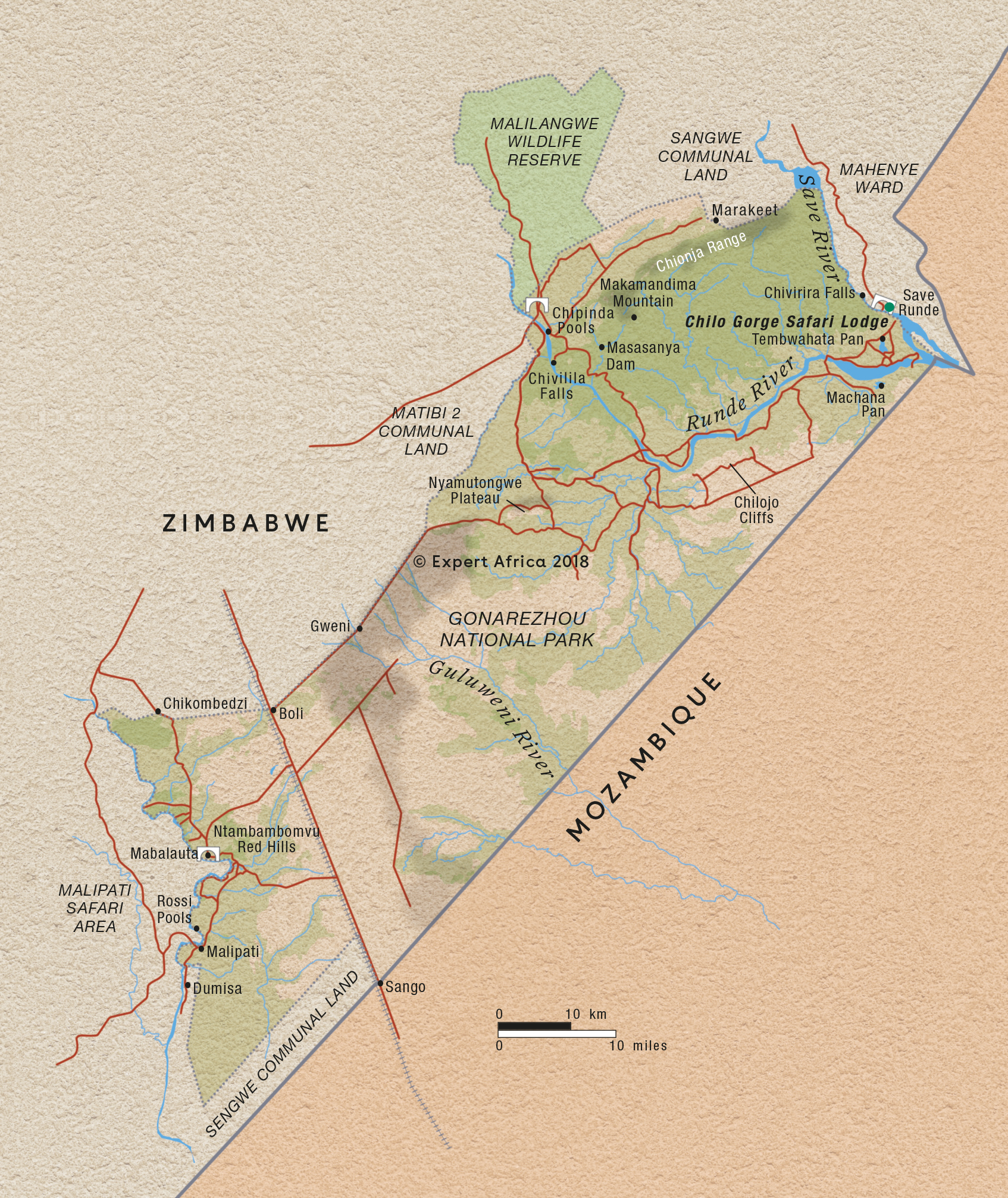
Gonarezhou & Save Valley: Safaris

Bat Hawk Safari
7 days • 2 locations
HARARE AIRPORT TO JOHANNESBURG AIRPORT
Explore two areas revered by safari enthusiasts with some of Africa’s best walking and some superb guiding – even by Zimbabwe’s high standards – for a varied and wonderfully immersive wilderness experience.
US$8,670 - US$9,130 per person
3 top lodges and safari camps in Gonarezhou National Park
This part of the national park is one of Zimbabwe’s true wilderness areas. However there is an excellent lodge (Chilo Lodge) and also a number of camping opportunities within the park. Ask us for more details of what's where, and what's likely to suit you best!

Chilo Gorge Safari Lodge
On the banks of the Save River, Chilo Gorge Safari Lodge offers game drives and walking safaris in Gonarezhou National Park.

Chilo Gorge Tented Camp
Chilo Gorge Tented Camp is a classic safari style property in Zimbabwe's isolate Gonarezhou National Park.

Pamushana Lodge
Pamushana Lodge is one of the most luxrious in Zimbabwe, facilities include a tennis court and spa. The wildife watching is excellent too.

Looking for inspiration on where to travel next?
Visit our trip chooser to explore your options and find inspiration for your perfect African adventure
Inspire me